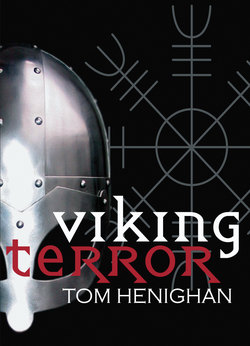Читать книгу Viking Terror - Tom Henighan - Страница 7
На сайте Литреса книга снята с продажи.
A BRIEF HISTORICAL NOTE
ОглавлениеThe Rigg Viking books are set in the early eleventh century, and Viking Terror, the second of the series, takes place at the Ostri Bygd, or Eastern Settlement, as the Norse called it, located in Eriksfiord on the southwestern coast of Greenland, and also in the Nordsetur, the Norse hunting grounds some twelve hundred kilometres north. The Eastern Settlement was founded by Erik the Red around the year 985 CE (his farm estate, known as Brattalid, had the best land), and from there the Norse spread out to the northwest. Banished from Iceland some years earlier, Erik had made a tremendous voyage of exploration, visiting the unknown lands west of Iceland and covering forty-five hundred kilometres. In the end, he chose a very good place for his settlement, since the Norse lasted in Greenland until about the fifteenth century. It was from southwestern Greenland that Leif, one of Erik’s sons, born in Iceland, set sail on his voyage to North America around the year 1000.
The years of the new millennium were a particularly meaningful time for the Norse peoples. For one thing, Christianity was just reaching them and changing their ancient pagan culture forever. Since the beginning of the ninth century Viking raiders, who came from Norway, Sweden, and Denmark, had voyaged and plundered, gradually extending their range east and west, until they reached the heart of Russia, Constantinople, Iceland, Greenland, and the shores of America. Not merely despoilers, the Norse were also great explorers and traders, and superb creators of arts, crafts, and literature. In 930, in Iceland, they established the world’s oldest surviving parliament. One historian has referred to them as a great catalyst for European society.
At the time in which the Rigg novels are set, the Viking world had reached its peak and was about to collapse inward. Unlike the later conquests of Napoleon and Hitler, the Viking expansion had proceeded with no master plan, merely under the pressure of social change and economic need. The Vikings had established separate kingdoms (and sometimes merely footholds) all over the map, but there was no coherent Viking empire. One by one, their bridgeheads were overcome; they were driven out or assimilated by the local populations. In Normandy, for example, they mingled with the original inhabitants to establish the Norman realm of William the Conqueror, who invaded Britain in 1066, with enormous historical consequences. In Iceland, a strong and separate Viking-based culture developed. In North America, the Norse could not hold their own against the native tribes, who had the advantage of numbers, experience of the wilderness, and even weaponry.
Leif Eriksson himself apparently did not return to Vinland, although he visited the Norway ruled by Olaf Tryggvason and may have been persuaded by the king to bring Christianity back to Greenland. The foundations of the Christian church built (reluctantly) by the pagan Erik the Red for Thiodhild, Leif’s mother, can be seen to this day. Sometime after Leif’s voyage, Erik made an attempt to reach Vinland but was driven back by bad weather and near shipwreck. A few expeditions followed, both from Greenland and Iceland, but they ended in internecine strife and murder, and by about 1025 the Vinland voyages seem to have stopped. During their incursions into North America (and the only settlement or outpost so far documented is at L’Anse aux Meadows in Newfoundland), the Norse encountered various native peoples, including the Dorset (Inuit folk who had settled in both Greenland and Eastern Canada, called Tornit in this story) and the Beothuk. The newcomers traded with the natives, but there was also violent contact, which sadly prefigures the attitude of the white settlers who would later permanently occupy the new land. The last Beothuk died in the early nineteenth century after several hundred years of genocide practised by the nominally “Christian” settlers.
NB: In the Rigg stories I often refer to the Swedes using the medieval term “Svear.” When I allude to the Norse language I am referring to the so-called dönsk tunga (Danish tongue) — in modern terms, Common Scandinavian. For convenience, I sometimes use the name Brattalid, really Erik’s farm, to refer to the whole eastern colony. I also use the term “Viking” rather broadly; strictly speaking, a Viking is a Norse raider. Norse traders, farmers, craftsmen, and so on, are not, per se, Vikings. Readers are invited to consult the Afterword to this volume for further information on this series.
